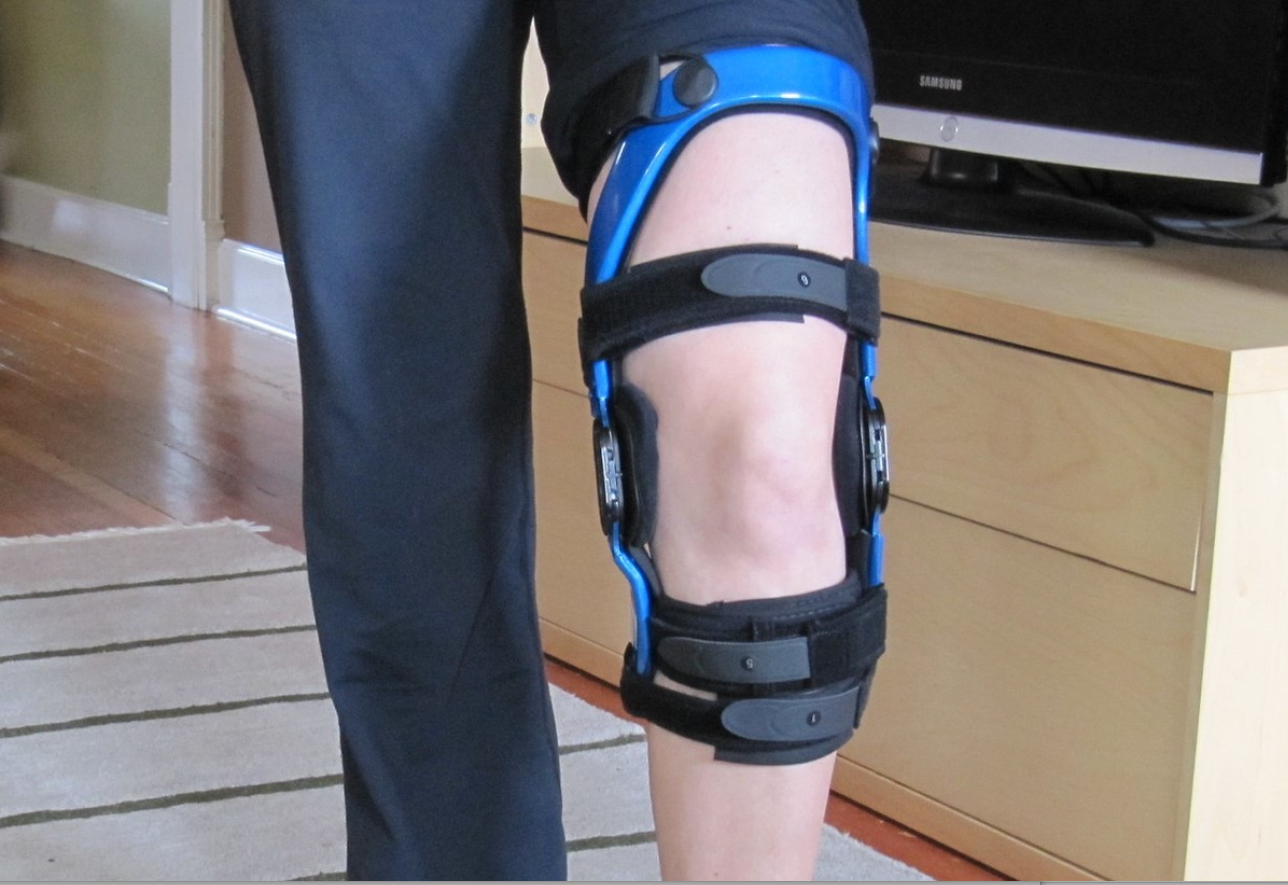Description:
Knee brace with a dynamic force mechanism for the treatment and rehabilitation of posterior cruciate ligament (PCL) injuries.
Published: 21st April 2020



Background
The Posterior Cruciate Ligament (PCL) is the strongest ligament in the human knee and injuries can typically occur from a high-force impact to the knee whilst in a bent position. Current methods of treatment for PCL injuries are, in less severe cases, through a conservative approach by immobilising the knee and fixing it in a specific position allowing for recovery. In more severe injury cases, treatment is through a surgical correction accompanied by immobilisation, rehabilitation and a recovery period.
In most treatment modalities, a fixing or splinting of the knee is required for the immobilisation. A knee brace is used to splint the knee and is crucial in the healing process of the PCL. Typical recovery timelines for the PCL can be between 26 ‑ 52 weeks ‑ improving the healing and recovery process, and reducing the time required, is valuable from a patient‑comfort and treatment cost perspective. Inefficient healing can result in more treatment interventions and/or longer recovery timelines being needed. The knee brace plays an important role in PCL injury recovery process.
Active force knee braces have emerged as valuable treatment technologies for knee injuries. Through the brace applying a force to the knee at a specific point, the recovering tendon (PCL) is protected from potential unwanted forces which could hamper the healing process. There are currently only a few of these active braces available commercially and these braces are traditionally expensive and could have long lead times to obtain which has a negative consequence on the patient treatment.
Another challenge with active force braces is the static force applied to the knee over the recovery period. A dynamic force system is preferred which delivers the (counter) force to the knee at the flexion angles when the force is needed most to protect the recovering PCL.
Technology Overview
Researchers at UCT in partnership with a knee specialist in private practice, have developed a novel PCL brace for the treatment of PCL injuries. The brace was designed to provide a dynamic tension function of the posterior cruciate ligament (PCL) over the knee’s range of motion.
The designed brace uses a physical method of tensioning a cable while still using the calf cup technology. The tensioning method is that of a non-circularpulley, also called a lobe, which changes the cable tension as a function of the knee’s fl exion. This lobe on either side of the knee pull onto the cable causing areduction in effective length and pushing the calf cup forwards. The UCT PCL knee brace utilises a lobe design so as to increase the load that the brace applies
to the posterior side of the calf over the knee joints fl exion range. The lobe was created with a surface that follows an involute profi le, designed to force thetibia forwards, alleviating pressure on the PCL. This method means that the PCL receives the forces required at its fl exion levels current stress. There istherefore no over-stressing of the joint at lower fl exion ranges. This provides a stable long-lasting solution to the stress placed on the PCL.
The involute profile of the lobe can be developed to patient specific rehabilitation plans. The number of the lobes also means that multiple shapes can be applied to get higher or lower medial and/or lateral forces applied to the posterior of the tibia, possibly allowing for rehabilitation of other ligament injuries.
Benefits
The novel UCT brace provides a technology which:
- Provides a cost-effective mechanism to introduce a dynamic force to assist and improve with PCL recovery
- Could shorten the recovery times of PCL injuries and as a result reduce the treatment expenses
- Allows for easy customisation of the patient specific forces required for optimal recovery through the novel tensioning/force mechanism ‑ the lobes/non‑circular pulleys. These lobes can easily be swapped in the braces throughout the recovery period if needed.
- Allow for potential integration into other braces.
Applications
Applications can include:
- Stand alone PCL knee brace with dynamic tensioning mechanism
- Integrate the tensioning mechanism into current knee braces
Opportunity
UCT is seeking a partner to commercialise the technology and complete the development to enable the product to go to market. UCT is able to provide partners with expert clinical support, mechanical engineering support and clinical trial facilities. UCT can also assist with the ongoing technology development.
Partners could be:
- Existing orthopedic support and/or rehabilitation device companies looking to diversify product portfolios
- Current PCL device companies looking for product improvements or technology innovations
- New companies looking for technology opportunities
Patents
IP Status
Seeking
- Development partner
- Commercial partner
- Licensing